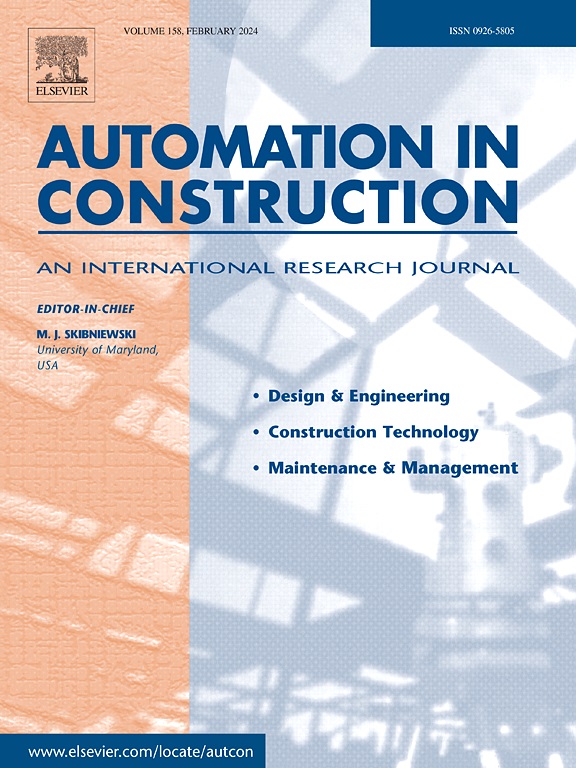Binocular vision-based guidance for robotic assembly of prefabricated components
IF 9.6
1区 工程技术
Q1 CONSTRUCTION & BUILDING TECHNOLOGY
引用次数: 0
Abstract
A robot-assisted installation method, which uses a crane to bear the component's weight and two robots to control the lifted component for precise horizontal positioning, was proposed in a previous study. To enhance the capability to operate large prefabricated components, this paper designs a binocular vision-based technique for real-time localization of the end-tool during the component-pushing process. Each robot is continuously commanded to rotate and translate the end tool based on the measured difference between its current and target poses, until this difference is within an acceptable threshold. The principles and implementation details of the visual method are described in this paper. Even if the robot deforms or slips, accurate measurement and adjustment of the end tool's pose allow effective pushing of the component to the target area. Test results demonstrate that the binocular vision guidance technology is feasible and effective, improving the flexibility and practicability of the installation-assisted robot.

求助全文
约1分钟内获得全文
求助全文
来源期刊

Automation in Construction
工程技术-工程:土木
CiteScore
19.20
自引率
16.50%
发文量
563
审稿时长
8.5 months
期刊介绍:
Automation in Construction is an international journal that focuses on publishing original research papers related to the use of Information Technologies in various aspects of the construction industry. The journal covers topics such as design, engineering, construction technologies, and the maintenance and management of constructed facilities.
The scope of Automation in Construction is extensive and covers all stages of the construction life cycle. This includes initial planning and design, construction of the facility, operation and maintenance, as well as the eventual dismantling and recycling of buildings and engineering structures.
 求助内容:
求助内容: 应助结果提醒方式:
应助结果提醒方式:


